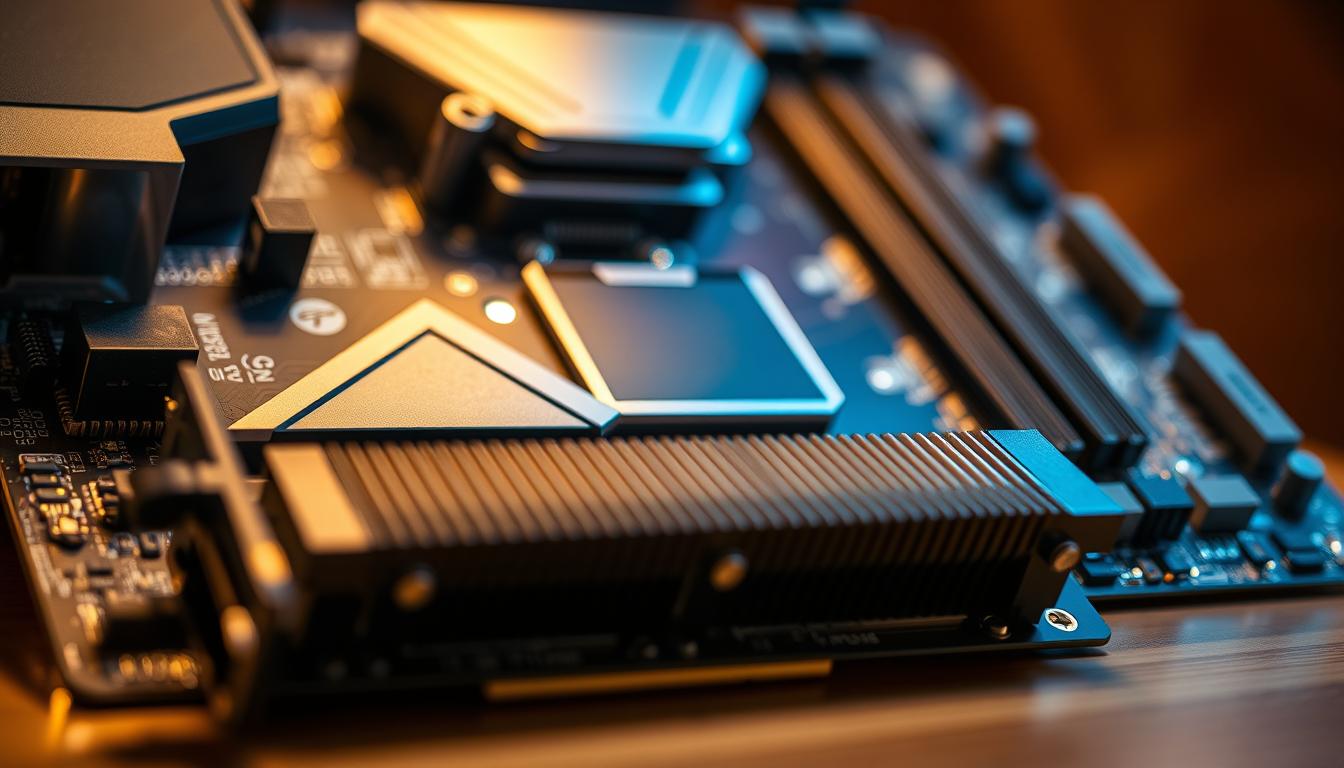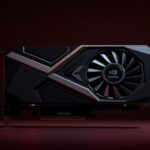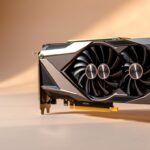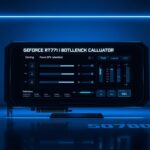Last Updated on August 7, 2025 by Gill
Remember that mix of excitement and dread when upgrading your computer? I sure do. Last year, I spent weeks researching the perfect graphics card for gaming, only to discover it didn’t play nice with my older motherboard. The frustration was real – and entirely preventable.
Here’s the good news: most modern components work beautifully together. If your system’s less than ten years old, you’re probably safe. But when adding serious firepower like a dedicated graphics card, a quick compatibility check becomes your best friend.
Why risk frying your hardware or dealing with crashes? I’ve seen friends lose expensive components by skipping this simple verification. It’s like buying premium tires without checking your car’s wheel size – technically possible, but potentially disastrous.
This guide walks you through the process like a trusted mechanic. We’ll cover physical connections, power requirements, and those sneaky BIOS settings that can make or break your setup. You’ll learn how to protect your investment while unlocking your system’s full potential.
Think of it as insurance for your tech journey. A few minutes now could save hours of troubleshooting later. Let’s make sure your upgrade story has a happy ending!
Introduction to GPU and Motherboard Compatibility
The heart of a smooth PC upgrade lies in component harmony. Imagine pairing a powerful graphics card with a mismatched motherboard – like fitting a jet engine in a compact car. It might look impressive, but it won’t run right.
Why Component Harmony Matters
Mismatched parts create headaches. A high-end graphics card might not fit physically, drain too much power, or refuse to communicate with older systems. These issues lead to choppy gameplay, sudden crashes, or worse – fried components. Additionally, users may encounter signs of a failing GPU, which can exacerbate performance issues. Visual artifacts, bizarre screen glitches, and unexpected resets are all red flags that indicate something is seriously wrong. Proper compatibility checks and timely upgrades can save both time and money, ensuring a smoother gaming experience.
What This Guide Delivers
We’ll break down compatibility into simple checks anyone can do. You’ll learn to:
- Match interface types like PCIe slots
- Measure physical space in your case
- Calculate power needs accurately
No technical jargon – just clear steps to protect your gear and unlock peak performance. Let’s turn potential disasters into seamless upgrades.
GPU Compatibility: How to Check if GPU Works with Your Motherboard
Building a powerful PC starts with getting the right conversation going between parts. The connection between your graphics card and motherboard is like a handshake – it needs to be firm and precise. Let’s break down what makes this partnership work.
Expansion Slot Essentials
Every modern motherboard uses PCI Express slots for graphics cards. These slots come in different generations: 2.0, 3.0, and 4.0. Newer versions handle data faster but still work with older cards. Think of it like USB ports – newer ones are better, but they’ll accept older devices.
Here’s a quick way to check compatibility:
| PCIe Version | Release Year | Bandwidth per Lane | Backward Compatible? |
|---|---|---|---|
| 4.0 | 2017 | 1.97 GB/s | Yes |
| 3.0 | 2010 | 0.985 GB/s | Yes |
| 2.0 | 2007 | 0.5 GB/s | Yes |
Find your motherboard’s specs using its manual or the manufacturer’s website. Match the PCIe version with your graphics card’s requirements. Even if versions differ, most cards will still function – you might just lose some speed.
Three key steps for success:
- Locate your motherboard model number
- Check PCIe slot generation in documentation
- Compare with your card’s interface needs
This foundation ensures your components speak the same language. Next, we’ll explore how physical space affects your setup.
Understanding PCIe x16 Slots and Graphics Card Interfaces
Modern computer upgrades hinge on understanding connection highways between components. The PCIe x16 slot serves as the main expressway for graphics cards, handling everything from 3D rendering to high-resolution video output.
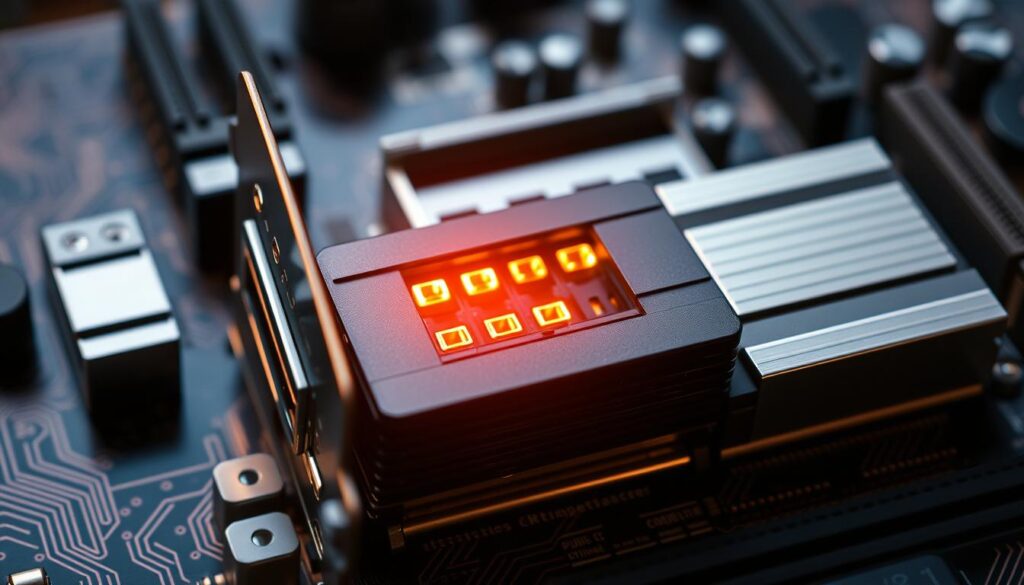
Generational Speed Differences
PCI Express versions act like highway expansions. While PCIe 2.0 handles basic traffic, newer lanes like 3.0 and 4.0 move data twice as fast. This table shows why version matters:
| PCIe Generation | Release Year | Speed per Lane |
|---|---|---|
| 2.0 | 2007 | 4 GT/s |
| 3.0 | 2010 | 8 GT/s |
| 4.0 | 2017 | 16 GT/s |
Bandwidth Realities
Newer graphics cards can physically fit older x16 slots, but performance takes a hit. A PCIe 4.0 card in a 2.0 slot works at 25% capacity – like using a sports car in rush-hour traffic.
Most 2025 systems still use PCIe 3.0, but 4.0 adoption grows weekly. The slot’s design allows flexibility, but always match high-end components with modern interfaces for full-speed performance.
Checking Physical Fit and Space Requirements in Your PC Case
Ever tried squeezing a sofa into a studio apartment? That’s what installing modern graphics cards feels like without proper planning. Your system’s performance depends as much on available space as it does on technical specs.
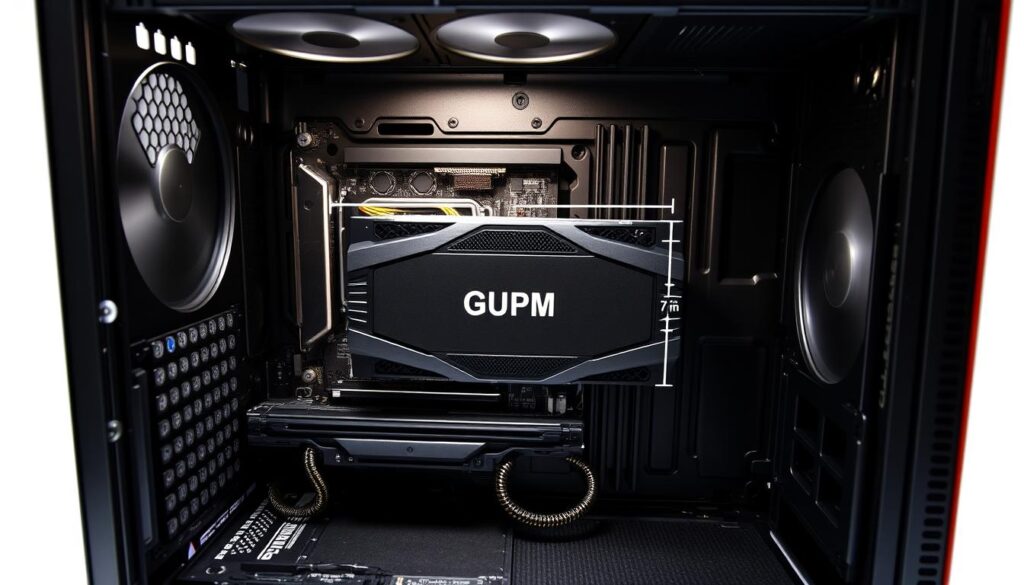
Measuring GPU Dimensions and Case Clearance
Start by comparing two numbers: your case’s maximum supported length and your chosen card’s measurements. Most manufacturers list these specs clearly – a 30-second search prevents hours of frustration.
Common clearance issues arise with:
| Case Size | Typical Max GPU Length | High-End Card Fit? |
|---|---|---|
| Mini-ITX | 250mm | Rarely |
| Mid-Tower | 330mm | Usually |
| Full-Tower | 400mm+ | Always |
Grab a tape measure if specs are missing. Check front-to-back clearance behind the rear bracket – that extra inch matters for high-end graphics cards. Don’t forget width: bulky coolers might block RAM slots or drive bays.
Ensuring Proper Airflow and Cooling
Available space affects more than installation. Cramped cases create heat pockets that throttle performance. Leave at least 25mm between your card’s fans and adjacent components for decent airflow.
Three signs you need more breathing room:
- Existing components run hotter than usual
- Case fans spin loudly under load
- Thermal throttling occurs during gaming
Remember: graphics cards need enough space to inhale cool air and exhale heat. Plan your layout like chess – every component’s position impacts the whole system’s stability.
Evaluating Power Supply and Connector Requirements
Think of your computer’s energy needs like a kitchen remodel. You wouldn’t install a commercial pizza oven without upgrading your home’s electrical system. The same logic applies when adding a hungry graphics card to your rig.
Assessing PSU Wattage and Capacity
Your power supply unit (PSU) is the heart pumping energy to every component. High-performance cards like the RTX 3080 gulp 320 watts – triple what entry-level models consume. Use this quick reference:
| Card Type | Wattage | Minimum PSU |
|---|---|---|
| GTX 1050 Ti | 75W | 300W |
| RTX 3060 | 170W | 550W |
| RTX 4080 | 320W | 750W |
Follow the 50% rule: your card’s max draw shouldn’t exceed half your PSU’s capacity. This leaves room for other components and power spikes during intense gaming sessions.
Understanding Connector Types and Power Cables
Modern connectors come in three flavors: 6-pin (75W), 8-pin (150W), and the new 12VHPWR (600W). High-end cards often need multiple cables. An RTX 3090 might require three 8-pin connectors, while a GTX 1650 runs solely on PCIe slot power.
Check your power supply’s cable inventory before buying. Adapters exist but can strain older units. When in doubt, upgrade your PSU – it’s cheaper than replacing fried components.
Remember: stable power means smoother gameplay and longer hardware life. A proper energy setup lets your components shine without fireworks.
Additional Compatibility Considerations for Optimal Performance
Imagine revving a sports car engine in a vintage chassis – that’s what happens when pairing new tech with aging parts. Even flawless physical and power compatibility won’t save you from hidden performance traps lurking in outdated firmware or mismatched components.
BIOS/Firmware Updates and Motherboard Settings
Your motherboard’s software often needs tweaks for new hardware. Manufacturers regularly release updates to support modern graphics cards. I once saw a RTX 4070 run at half speed until a BIOS patch unlocked its full potential.
Always visit the manufacturer’s website before installation. Look for:
- BIOS version requirements for specific cards
- Stability improvements for gaming setups
- Security patches affecting hardware communication
Avoiding Bottlenecks from Other Components
A powerful graphics card can’t compensate for weak links elsewhere. Here’s how common components hold back performance:
| Component | Bottleneck Signs | Upgrade Solution |
|---|---|---|
| CPU | High GPU usage with low FPS | Match core count to card’s capabilities |
| RAM | Stuttering in open-world games | Upgrade to 16GB+ DDR4/DDR5 |
| Storage | Long texture load times | Switch to NVMe SSD |
Balance is key. Pairing a $800 card with a $100 processor wastes money. Monitor system metrics during gaming – if your CPU hits 100% while the card loafs at 60%, it’s upgrade time.
Conclusion
Upgrading your rig shouldn’t feel like solving a physics equation. By focusing on three core areas – PCIe x16 slots, case dimensions, and power capacity – you’ll dodge 90% of common installation headaches. These checks take minutes but safeguard against costly mismatches.
Modern motherboards and graphics cards generally play nice, but exceptions exist. Always verify physical clearance first – even premium components become paperweights if they won’t fit. Next, match your power supply’s muscle to your card’s appetite. A 750W PSU handles most setups comfortably.
Don’t overlook firmware updates. Manufacturers constantly refine compatibility through BIOS patches. Bookmark your hardware makers’ support pages – they’re goldmines for troubleshooting guides and spec sheets.
Finally, balance your system. Pairing a powerhouse graphics card with outdated RAM or storage creates wasted potential. Think ecosystem, not just individual parts. With these steps, your upgraded machine will hum like a precision instrument – no crossed fingers required.
FAQ
Will a PCIe 4.0 graphics card work in a PCIe 3.0 slot?
How do I know if a graphics card will physically fit my PC case?
Can my power supply handle a high-end graphics card?
Do I need to update my motherboard BIOS for newer graphics cards?
Will my CPU or RAM bottleneck a modern graphics card?
Are all PCIe x16 slots the same?
- RTX 3070 Bottleneck Calculator: Optimize Your Setup - September 27, 2025
- Optimize Your RTX 3060 Ti: Use Our Bottleneck Calculator - September 26, 2025
- GeForce RTX 5060 Bottleneck Calculator – Find Your GPU’s Limits - September 25, 2025

